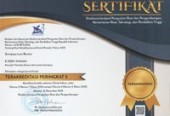A Restorative Justice System in Indonesia: A Close View from the Indigenous Peoples’ Practices
DOI:
https://doi.org/10.28946/slrev.Vol7.Iss1.1919.pp87-104Keywords:
Baduy community, In-donesian Legal System Reform, Integrated Criminal Justice Sys-tem, Restorative justice.Abstract
The Indonesiancrime rate until May 2020 increased due to public orders and crime disturbances in the last 22 weeks.Data from correctional institutions in February 2021 showed that some regional offices were over capacity while others were normal. The 1945 IndonesianConstitution recognises traditional institutions in the criminal justice system and requires judges to consider legal values and a sense of justice in society. This study aims to determine Indonesia's customary criminal justice system as a form of restorative justice. This research used a socio-legal approach and found that public participation in Indonesia, through customary groups, can help prevent crime and solve problems through discussion and following applicable customary law processes. As a result, Indonesian researchers have regulated and recognised customary justice's existence and implemented it to deal with cases in their environment. Restorative justice is a criminal mechanism that aims to restore the relationship of the conflicting parties to the state before the conflict and is carried out informally. This concept is also an acknowledgement of oriental legal philosophy which, in resolving any conflict, always seeks to restore relations; macro stability or society can even affect the stability of the universe. The practice of Restorative Justice occurs in customary law. As a legal philosophy, the legal policy of implementing Restorative justice should be interpreted mainly as revitalising customary law if conflicts occur between fellow supporters of the same customary law. The settlement of cases in the Baduy community is straightforward. The settlement prioritises forgiving each other. Restorative justice is performed by combining criminal justice mechanisms with public participation in a discussion mediation.Downloads
References
Arief, Barda Nawawi. “Masalah Perlindungan Hukum Bagi Anak.†Presented at the Seminar Nasional Peradilan Anak Fakultas Hukum Universitas Padjadjaran, Bandung, 1996.
Bazemore, Gordon, and Leslie Leip. “Victim Participation in the New Juvenile Court: Tracking Judicial Attitudes Toward Restorative Justice Reforms.†The Justice System Journal 21, no. 2 (2000): 199–226.
Braithwaite, John. “Restorative Justice: Assessing Optimistic and Pessimistic Accounts.†Crime and Justice 25 (1999): 1–127.
Brennan, Tim. “Classification for Control in Jails and Prisons.†Crime and Justice 9 (January 1, 1987): 323–66. https://doi.org/10.1086/449139.
Bruggink, JJ. H. Refleksi Tentang Hukum: Pengertian-Pengertian Dasar Dalam Teori Hukum. Translated by Arief Sidharta. Bandung: Citra Aditya Bakti, 2015.
Butt, Simon, and Tim Lindsey. “Traditional and Customary Law: Adat.†In Indonesian law, edited by Tim Lindsey and Simon Butt, 0. Oxford University Press, 2018. https://doi.org/10.1093/oso/9780199677740.003.0007.
Chapple, Constance L. “Selfâ€Control, Peer Relations, and Delinquency.†Justice Quarterly 22, no. 1 (March 1, 2005): 89–106. https://doi.org/10.1080/0741882042000333654.
Daud, Brian Septiadi, and Irma Cahyaningtyas. “Criminal Justice System Toward Children With Legal Conflict Seen In Justice Restorative Perspective." Jurnal Hukum Prasada 7, no. 1 (April 7, 2020): 14–26. https://doi.org/10.22225/jhp.7.1.1223.14-26.
Dewantara, Jagad Aditya, Ilham Fajar Suhendar, Rum Rosyid, and Thomy Sastra Atmaja. “Pancasila as Ideology and Characteristics Civic Education in Indonesia.†International Journal for Educational and Vocational Studies 1, no. 5 (July 20, 2019): 400–405. https://doi.org/10.29103/ijevs.v1i5.1617.
Faturrahman, Ferry. “Hukum Pidana Adat Baduy Dan Relevansinya Dalam Pembaharuan Hukum Pidana.†Law Reform 5, no. 2 (October 2, 2010): 1–38. https://doi.org/10.14710/lr.v5i2.12493.
Feld, Barry C. “Juvenile and Criminal Justice Systems’ Responses to Youth Violence.†Crime and Justice 24 (January 1, 1998): 189–261. https://doi.org/10.1086/449280.
Friedman, L.M. The Legal System: A Social Science Perspective. Russell Sage Foundation, 1975.
Garcia, Virginia. “The Enforcement of Restorative Justice in Indonesian Criminal Law.†Legality : Jurnal Ilmiah Hukum 28, no. 1 (April 10, 2020): 22–35. https://doi.org/10.22219/ljih.v28i1.10680.
Hamdan, M. Politik Hukum Pidana. Jakarta: Raja Grafdindo Persada, 1997.
Hartanto, Sri, Indah Sri Utari, and Ridwan Arifin. “Implementation of Penal Mediation in the Perspective of Progressive Law (Study at the Semarang City Police Department).†Indonesian Journal of Criminal Law Studies 4, no. 2 (2019): 161–88.
Kanter, E.Y., and S.R. Sianturi. Asas-Asas Hukum Pidana Di Indonesia Dan Penerapannya. Jakarta: Storia Grafika, 2022.
Kristianto, Dody, and Nur Seha. “Nilai Moral Dalam Tanda Basa Baduy.†Kandai 12, no. 2 (2018): 269–82.
Liebmann, Marian. Restorative Justice: How It Works. Restorative Justice: How It Works. London, England: Jessica Kingsley Publishers, 2007.
Marshall, Tony F. Restorative Justice: An Overview. London: Home Office, Research Development and Statistics Directorate, 1999.
Menski, W. “Remembering and Applying Legal Pluralism: Law as Kite Flying,†January 1, 2014, 91–108.
Muladi. Kapita Selekta Sistem Peradilan Pidana. Badan Penerbit Universitas Diponegoro, 1995.
Nasikun. Sebuah Pendekatan Untuk Mempelajari Sistem Sosial Indonesia. Yogyakarta: Fakultas Ilmu Sosial dan Politik UGM, 1974.
Ness, Daniel W van, and Pat Nolan. “Legislating for Restorative Justice.†Regent University Law Review 10 (1998): 53–110.
Nylund, Anna, Kaijus Ervasti, and Lin Adrian, eds. Nordic Mediation Research. Cham: Springer International Publishing, 2018. https://doi.org/10.1007/978-3-319-73019-6.
Rahayu, Derita Prapti, Faisal Faisal, Rafiqa Sari, and Ndaru Satrio. “Law Enforcement in the Context of Legal Culture in Society.†Law Reform 16, no. 2 (September 27, 2020): 276–89. https://doi.org/10.14710/lr.v16i2.33780.
Riggs, Fred Warren. Administration in Developing Countries: The Theory of Prismatic Society. Edited by Dayton David MacKean. Boston: Houghton Mifflin, 1964.
Robinson, Joseph, and Jennifer Hudson. “Restorative Justice.†Willamette Journal of International Law and Dispute Resolution 23, no. 2 (2016): 335–66.
Rochaeti, Nur, and Rahmi Dwi Sutanti. "Revitalisation of Customary Court in the Juvenile Criminal Justice System in Indonesia." In SHS Web of Conferences, edited by A. Raharjo and T. Sudrajat, 54:07011, 2018. https://doi.org/10.1051/shsconf/20185407011.
Rochaeti, Nur, and Rahmi Dwi Sutanti. “Kontribusi Peradilan Adat Dan Keadilan Restoratif Dalam Pembaruan Hukum Pidana Di Indonesia.†Masalah-Masalah Hukum 47, no. 3 (2018): 198–214. https://doi.org/10.14710/mmh.47.3.2018.198-214.
Schefold, Reimar. “The Domestication of Culture: Nation-Building and Ethnic Diversity in Indonesia.†Bijdragen Tot de Taal-, Land- En Volkenkunde 154, no. 2 (1998): 259–80.
Sidambaram, Suriakumari. “The Role of Police, Prosecution and the Judiciary in the Changing Society–the Singapore Approach.†Resource Material Series, no. 55 (2000): 303–35.
Simanjuntak, Samuel Hamonangan, and FX Joko Priyono. “Legal Pluralism as Pancasila’s Reflection to Realize Substantive Justice in Law Enforcement and Law-Making.†Pancasila: Jurnal Keindonesiaan 3, no. 1 (April 25, 2022): 37–48. https://doi.org/10.52738/pjk.v2i1.88.
Soemitro, Ronny Hanitijo. Studi Hukum Dan Masyarakat. Bandung: Alumni, 1985.
Steeman, Theodore M. “Religious Pluralism and National Integration.†Dissertation, Harvard University, 1973.
Sulistyo, Edhei, Pujiyono Pujiyono, and Nur Rochaeti. “Restorative Justice as a Resolution for the Crime of Rape with Child Perpetrators.†International Journal of Criminology and Sociology 10 (April 30, 2021): 595–602. https://doi.org/10.6000/1929-4409.2021.10.69.
Umbreit, Mark S, and Marilyn Peterson Armour. “Restorative Justice and Dialogue: Impact, Opportunities, and Challenges in the Global Community.†Washington University Journal of Law & Policy 36 (2011): 65–89.
Utami, Pangestika Rizki. “Konsep Diversi dan Restorative Justice sebagai Pergeseran Tanggung Jawab Pidana pada Sistem Peradilan Pidana Anak.†Volksgeist: Jurnal Ilmu Hukum dan Konstitusi 1, no. 1 (June 19, 2018): 95–106. https://doi.org/10.24090/volksgeist.v1i1.1691.
Widyawati, Anis, Pujiyono Pujiyono, Nur Rochaeti, Genjie Ompoy, and Nurul Natasha Binti Muhammad Zaki. “Urgency of the Legal Structure Reformation for Law in Execution of Criminal Sanctions.†Lex Scientia Law Review 6, no. 2 (2022): 327–58. https://doi.org/10.15294/lesrev.v6i2.58131.
Wilson, David B, Ajima Olaghere, and Catherine S Kimbrell. Effectiveness of Restorative Justice Principles in Juvenile Justice: A Meta-Analysis. Inter-university Consortium for Political and Social Research, 2018.
Wood, William R., and Masahiro Suzuki. “Four Challenges in the Future of Restorative Justice.†Victims & Offenders 11, no. 1 (January 2, 2016): 149–72. https://doi.org/10.1080/15564886.2016.1145610.
Wood, William R., Masahiro Suzuki, and Hennessey Hayes. “Restorative Justice in Youth and Adult Criminal Justice,†September 15, 2022. https://doi.org/10.1093/acrefore/9780190264079.013.658.
Young, Susan, Ben Greer, and Richard Church. “Juvenile Delinquency, Welfare, Justice and Therapeutic Interventions: A Global Perspective.†BJPsych Bulletin 41, no. 1 (2017): 21–29. https://doi.org/10.1192/pb.bp.115.052274.
Zulfa, Eva Achjani. “Keadilan Restoratif Indonesia, Studi Tentang Kemungkinan Penerapan Pendekatan Keadilan Restoratif Dalam Praktek Penegakan Hukum Pidana.†Dissertation, Universitas Indonesia, 2009.















